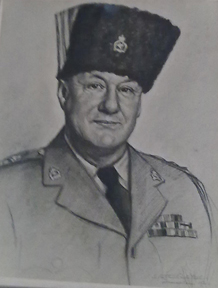Usuario:Robitsju/taller
Leo Arthur Robitschek[editar]
(1893-1961)[editar]
Leo Arthur Robitschek (1893-1961)

Nació en Viena-Austria. Desde muy joven desarrolló cualidades artísticas por lo que sus padres lo inscriben en la academia publica de arte en Viena (Akademie der bildenden Künste Wien), fundada en 1692 y la cual obtiene la categoria de universidad en 1988. Posteriormente realiza sus estudios superiores de arte en el instituto Staatliche Kunstgewerbeschule de Viena donde en 1928 obtiene la más alta distinción y desarrolla su carrera profesional. Hombre polifacético, se desarrolla en el campo del dibujo, la fotografía, el grabado, los textiles, la ingeniería e incluso la sicología, lo cual lo lleva a estudiar con el sicólogo vienes Alfred Adler; por todo esto sus amistades le dieron el sobrenombre de Leonardo Da Vinci, haciendo juego con su nombre Leo Arthur.

Sus primeros cuadros son en colores, pero debido a un accidente en la cabeza sufre de un daltonismo poco común que le impide diferenciar entre el verde y el azul. Es por ello que posteriormente sólo realiza trabajos en blanco y negro (carboncillo y lápiz). A mediados de los años 30 se establece en Palestina bajo el mandato británico y ahí comienza una exitosa carrera como fotógrafo y retratista. Realiza las primeras postales de Palestina y dibuja en un periodo de 6 años a más de seiscientos oficiales de alto rango británicos y personalidades del Medio Oriente, entre ellas a los príncipes de Grecia Peter e Irene (de cuyo retrato se hizo una estampilla conmemorativa), el general norteamericano George S. Patton y el barón Arthur William Tedder.


Uno de sus aprendices, fue el conocido fotógrafo e ilustrador David Harris quien fue corresponsal militar del ejército israelita en 1948 y posteriormente exhibió sus trabajos en Holanda, Tel Aviv, New York, Filadelfia y Jerusalén.

Para realizar sus iconografías desarrolló una cámara que permitía ver en 3ra dimensión, por lo que las características faciales eran algo más que una foto convencional, logrando así un efecto estereoscópico. Hoy en día esto se realiza con las computadoras. Con la ayuda de esta cámara lograba ahorrar tiempo y la fatiga de posar del cliente sin obstaculizar el valor artístico de su creación y así obtener una excelente y profunda perspectiva. Se eliminaban así dos aspectos negativos de la fotografía tradicional: 1) Lo plano, sin vida y pobreza de la forma por ser bidireccional. 2) Lo artificial debido a la mala utilización de luces y sombras. También por sus conocimientos de sicología lograba imprimir en los retratos la personalidad de sus clientes. Leo Arthur recibió muchas cartas de madres, esposas o amigos de fallecidos retratados, quienes le daban las gracias por el excelente trabajo ya que con el retrato sentían la presencia de sus seres queridos. También tenía vasta experiencia textil y escribió e ilustró dos libros: El Verdadero Tapiz (Der Echte Teppich) y Patrones Orientales y Chinos de Alfombras (Orientalische und Chinesische Teppichvorlagen).



En 1946 emigra a Venezuela donde continúa su trabajo como retratista y funda una empresa textil. Fallece en Caracas en 1961.













Leo Arthur Robitschek (1893-1961) Born in Vienna - Austria. From a very young age developed artistic qualities so his parents enrolled him in the Public Art Academy in Vienna (Akademie der bildenden Künste Wien), founded in 1692 which obtained the category of University in 1988. Then made his higher studies of art at the Staatliche Kunstgewerbeschule in Vienna where he obtained the highest distinction in 1928 and developed his professional career. Versatile man develops himself in the field of drawing, photography, printmaking, textiles, engineering and even psychology, which leads him to study with Austrian psychologist Alfred Adler; for all this his friends gave him the nickname of Leonardo Da Vinci, matching its name with Leo Arthur. Its first pictures are in color, but due to an accident in the head, he suffers from a rare color blindness that prevents him from distinguishing between green and blue, therefore subsequently only works in black and white (charcoal and pencil). In the mid-1930s he sets in Palestine under the British mandate, and there begins a successful career as a photographer and portrait painter. Develops the first postcards from Palestine and during six years more than six hundred portraits drawings of senior British officers and eminent personalities of the Middle East, including to the Princes of Greece, Peter and Irene (whose portrait was used for a commemorative stamp), the American general George S. Patton and the baron Arthur William Tedder, have been produced in his studio. One of his apprentices was the well-known photographer and Illustrator David Harris, who was a military correspondent for the Israeli army in 1948 and subsequently exhibited his works in the Netherlands, Tel Aviv, New York, Philadelphia and Jerusalem. To perform its iconography he developed a camera that allowed seeing in the 3rd dimension, a stereo camera, so the facial features were more than a conventional photo. With the help of the camera he saved his and his model’s time and fatigue by sitting as little as possible without impairing the artistic value of his work and giving to this pictures the highest possible degree of likeness and vividness, thus obtaining and excellent deep perspective to a degree not hitherto achieved. He succeeded in eliminating the two mistakes in conventional photography: 1) Flat, lifeless and poor in form because it is bi-dimensional. 2) Unnatural owing to its representation of light and shadows. Also because of his knowledge of psychology he was able to reproduce in the portraits the personality of its customers. Leo Arthur received many letters from mothers, wives or friends of deceased portrayed, who gave thanks for his excellent work since with the portrait they felt the presence of their loved ones. He also had extensive textile experience and wrote and illustrated two books: the true tapestry (Der Echte Teppich) and Oriental patterns and Chinese rugs (Orientalische und Chinesische Teppichvorlagen). In 1946 he established in Venezuela where he continued his work as a portraitist and founded a textile company. He died in Caracas in 1961.
